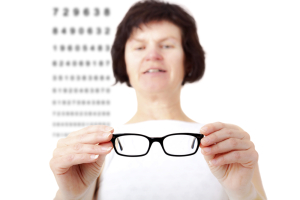Introduction
Toxic amblyopia, also called “optic neuritis”, develops as a result to exposure to toxic substances and a lack of certain vitamins. This leads to a loss of vision. It has been known for some time that alcohol and tobacco, particularly when used excessively, can cause visual damage. It seems to be a direct toxic effect on the nerve fibers of the optic nerve leading to a condition called “adult amblyopia”.
Common causes of toxic amblyopia
| alcohol (possibly due to lack of vitamin A and vitamin B-complex intake in chronic alcoholics) |
| excessive cigarette and cigar smoking |
| lead |
| mercury |
| methanol (often contained in cleaning agents) |
| drugs like digitalis, ethambutol, and other drugs |
In 1992 there was an epidemic in prisoners of war in Cuba where peripheral neuropathy (loss of feeling in the skin) and optic neuropathy occurred frequently in those who smoked a lot of cigars and who lacked a good protein source in their diet. With vitamin A and B-complex supplements and balanced food intake including protein the epidemic stopped.
Signs and Symptoms
There is a loss of vision that can not be corrected with glasses beyond a certain degree. Circumscript visual field losses develop (scotomas) as shown in this link, where the black areas of the visual field tests show the blind spots.
Diagnostic Test
No abnormalities are usually seen in the fundus. Only late cases that lead to blindness show the signs of optic atrophy. An MRI scan of the optic chiasm and the optic nerves may be indicated.
Treatment
Treatment includes the removal of all toxic substances from the environment and food and changing unhealthy lifestyles into healthy ones.
References:
1. Merck Manual: Toxic Amblyopia (thanks to www.merckmanuals.com for this link).
2. Ferri: Ferri’s Clinical Advisor: Instant Diagnosis and Treatment, 2004 ed., Copyright © 2004 Mosby, Inc.
3. Rakel: Conn’s Current Therapy 2004, 56th ed., Copyright © 2004 Elsevier







